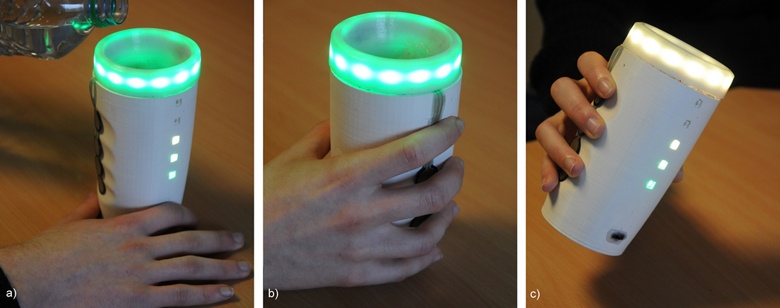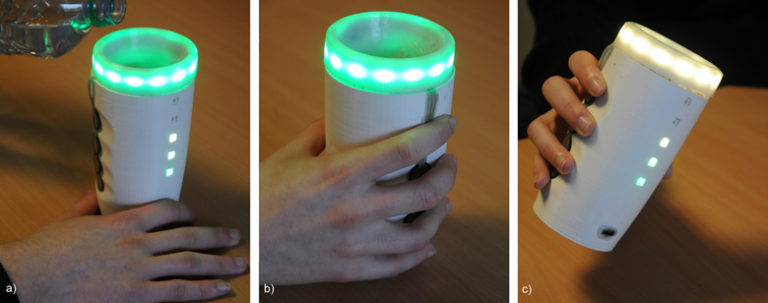
This paper presents a new platform to monitor the arm and hand activity of stroke patients during rehabilitation exercises in the hospital and at home during their daily living activities. The platform provides relevant data to the therapist in order to assess the patients physical state and adapt the rehabilitation program if necessary. The platform consists of a self-contained smart cup that can be used to perform exercises that are similar to everyday tasks such as drinking. The first smart cup prototype, the design of which was based on interviews regarding the needs of therapists, contains various sensors that collect information about its orientation, the liquid level, its position compared to a reference target and tremors. The prototype also includes audio and visual displays that provide feedback to patients about their movements. Two studies were carried out in conjunction with healthcare professionals and patients. The first study focused on collecting feedback from healthcare professionals to assess the functionalities of the cup and to improve the prototype. Based on this paper, we designed an improved prototype and created a visualization tool for therapists. Finally, we carried out a preliminary study involving nine patients who had experienced an ischemic or hemorrhagic stroke in the previous 24 months. This preliminary study focused on assessing the usability and acceptability of the cup to the patients. The results showed that the cup was very well accepted by eight of the nine patients in monitoring their activity within a rehabilitation center or at home. Moreover, these eight patients had almost no concerns about the design of the cup and its usability.

